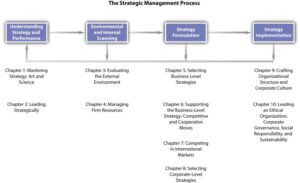
25. Workplace Communication sets the stage for this enthralling narrative, offering readers a glimpse into a story that is rich in detail and brimming with originality from the outset. Effective communication in the workplace is not just about exchanging information; it’s the backbone of a thriving organizational culture. It shapes team dynamics, influences productivity, and significantly impacts employee morale. Understanding the various channels and methods of communication can help foster a more cohesive and engaged workforce.
In the modern work environment, the significance of adapting communication styles to fit diverse settings—whether it’s face-to-face discussions, emails, or leveraging new technologies—cannot be overstated. Furthermore, as businesses expand globally, navigating the intricacies of international communication becomes essential for success. With all these elements at play, mastering workplace communication is crucial for both individual and collective growth.
Importance of Workplace Communication
Effective workplace communication is vital in creating a productive and positive work environment. When employees can clearly express their thoughts and ideas, it fosters a sense of belonging and enhances collaboration. This strong communication foundation is essential for teamwork, innovation, and overall company morale. The dynamics of team interactions are significantly influenced by communication practices. When team members communicate effectively, they can share responsibilities, resolve conflicts swiftly, and maintain high levels of engagement.
Conversely, poor communication can lead to misunderstandings, decreased productivity, and a toxic workplace culture.
Role of Effective Communication
Effective communication not only nurtures a positive atmosphere but also plays a crucial role in achieving organizational goals. Clear guidelines and expectations reduce confusion and ensure everyone is on the same page.
Impact on Team Dynamics
Team dynamics are enhanced when members feel comfortable sharing their ideas and feedback. This open environment promotes collaboration and leads to innovative solutions. Teams that communicate well are often more cohesive and perform better.
Consequences of Poor Communication
Poor communication can negatively impact employee morale and lead to high turnover rates. Employees may feel undervalued or disconnected from the organization’s mission, which can ultimately affect productivity and workplace culture.
Channels of Workplace Communication
In the modern workplace, various channels of communication can be utilized to facilitate effective interactions. These channels range from verbal and non-verbal communication to written forms, each with its own set of advantages and disadvantages.
Forms of Workplace Communication
Verbal communication includes face-to-face meetings, phone calls, and video conferences. Non-verbal cues, such as body language and facial expressions, can convey messages even without spoken words. Written communication encompasses emails, reports, and instant messaging.
Emails vs. Face-to-Face Interactions
Both emails and face-to-face interactions have their unique benefits. Emails allow for documentation and can be revisited, while face-to-face communication fosters stronger relationships and immediate feedback. Each method should be used strategically based on the context and importance of the message.
Role of Communication Technology
Communication technology has transformed workplace interactions, enabling seamless collaboration regardless of physical location. Tools like Slack, Microsoft Teams, and project management software have become indispensable for maintaining effective communication within teams.
Business Innovation and Workplace Communication
The advancement of communication tools has revolutionized how teams collaborate and innovate. Organizations that embrace new technologies often experience heightened productivity and enhanced teamwork.
Innovation in Communication Tools
Innovative communication tools, such as collaborative platforms and video conferencing, have significantly improved the way teams interact. These tools facilitate real-time discussions and decision-making, which can lead to faster project completion.
Successful Communication Strategies
Companies like Google and Zoom have successfully implemented innovative communication strategies that emphasize transparency and accessibility. Their focus on open communication channels encourages employee engagement and fosters a culture of collaboration.
Impact of Remote Work
Remote work has necessitated a shift in communication methods. Companies are increasingly relying on digital platforms to connect employees, which has led to the development of new communication norms and practices that prioritize clarity and responsiveness.
International Business Communication
In the global marketplace, understanding cultural differences in communication styles is essential for success. Each culture has unique preferences that can affect how messages are conveyed and received.
Cultural Differences
Communication styles vary significantly across cultures. For instance, some cultures value direct communication, while others prefer a more indirect approach. Recognizing these differences can help in crafting messages that resonate with international teams.
Best Practices for International Teams

To enhance communication in international teams, it’s crucial to establish common ground and utilize clear language. Regular check-ins and culturally sensitive practices can bridge gaps and improve overall team dynamics.
Importance of Language Proficiency
Language proficiency is vital in international business settings. Translation services and language training can mitigate misunderstandings and ensure that all team members are aligned on objectives and expectations.
Communication Skills for Job Search Techniques
Effective communication skills are essential when navigating the job search process. From crafting resumes to interviewing, how you present yourself can significantly impact your success.
Crafting Resumes and Cover Letters
A well-structured resume and cover letter should reflect your communication style. Use clear, concise language and highlight your achievements to capture the attention of potential employers.
Conducting Interviews
During interviews, it’s important to showcase your communication abilities. Practice articulating your thoughts clearly and confidently, as this demonstrates your professionalism and fit for the role.
Networking and Personal Branding
Networking is crucial in the job search process. Building professional relationships through effective communication can lead to valuable opportunities. Personal branding through social media and professional platforms can also enhance your visibility to potential employers.
Business Management and Effective Communication
The relationship between management styles and communication approaches is critical in shaping organizational culture. Managers who prioritize communication tend to foster healthier work environments.
Strategies for Managers
Managers can improve communication by encouraging open dialogue and providing feedback. Regular team meetings and one-on-ones create opportunities for employees to voice concerns and share ideas.
Key Communication Skills for Leaders
Successful business leaders possess essential communication skills, including active listening, empathy, and clarity. These skills help in building trust and motivating teams towards common goals.
Marketing Direct and Workplace Communication
Clear internal communication is fundamental in driving effective direct marketing campaigns. When marketing teams are aligned, they can execute strategies more efficiently.
Successful Marketing Communication Strategies
Companies that maintain clear communication between marketing and sales often see improved results. Consistent messaging ensures that everyone is informed and working towards the same objectives.
Importance of Feedback Loops
Establishing feedback loops between teams enhances collaboration and allows for the adjustment of strategies based on real-time insights. This practice fosters a culture of continuous improvement.
Business Networking and Communication
Networking is an essential skill for professionals seeking to build relationships and advance their careers. Effective communication is the cornerstone of successful networking.
Framework for Building Relationships
Creating meaningful professional relationships requires a strategic approach to communication. This involves being authentic, following up after meetings, and offering value to your connections.
Role of Social Media
Social media platforms have transformed networking opportunities. LinkedIn, for instance, allows professionals to connect, share insights, and engage with industry peers, broadening their reach and influence.
Etiquette Tips for Networking Events
Practicing good etiquette during networking events is crucial. Tips include maintaining eye contact, listening actively, and following up with personalized messages after the event to reinforce connections.
Communication in Business Outsourcing
Communication is a crucial component in successful business outsourcing relationships. It ensures that expectations are clear and that teams remain aligned throughout the engagement.
Challenges of Distributed Teams
Distributed teams often face communication challenges due to time zone differences and cultural nuances. Addressing these challenges requires intentional strategies to maintain effective communication.
Outsourcing Communication Strategies
Organizations can adopt various communication strategies, such as regular video calls, shared project management tools, and clear documentation, to facilitate smoother interactions with outsourcing partners.
Business Presentations and Communication
Delivering impactful business presentations is an art that requires effective communication skills. Engaging presentations can significantly influence audience perception and decision-making.
Best Practices for Presentations
To deliver a compelling presentation, it’s essential to structure your content logically and practice beforehand. Tailoring your message to the audience and using storytelling techniques can enhance engagement.
Role of Visual Aids
Visual aids, such as slides and infographics, can significantly enhance communication during presentations. They help illustrate key points and keep the audience focused on the message being conveyed.
Handling Questions and Feedback
Being prepared to handle questions and feedback is crucial during presentations. Encourage audience interaction and respond thoughtfully to demonstrate your expertise and confidence.
Enhancing Business Productivity Through Communication
Streamlining communication processes can lead to significant improvements in business productivity. Organizations that prioritize effective communication are often more agile and responsive.
Methods to Streamline Communication

Implementing clear communication protocols, utilizing collaborative tools, and encouraging feedback can help streamline processes. These methods foster efficiency and reduce misunderstandings.
Tools for Enhancing Communication Efficiency
Tools like project management software, instant messaging platforms, and video conferencing can enhance workplace communication. These tools facilitate quicker decision-making and improve overall team collaboration.
Case Studies of Productivity Increases
Organizations that have revamped their communication strategies often see increased productivity. For instance, companies that adopt agile methodologies and enhance communication structures tend to perform better.
Workplace Safety and Communication
Clear communication is essential in promoting workplace safety. Effective communication strategies help ensure that employees are aware of safety protocols and procedures.
Training Programs for Safety Protocols
Organizations can implement training programs focused on effective communication regarding safety. Regular safety meetings and drills can reinforce the importance of clear communication in hazardous situations.
Strategies for Enhancing Safety Awareness
Strategies to enhance safety awareness include using visual reminders, conducting regular safety briefings, and encouraging an open dialogue about safety concerns among employees.
Team Building and Communication
Effective communication is fundamental in fostering trust and collaboration within teams. Strong communication practices enhance team-building efforts and lead to successful outcomes.
Strategies for Team-Building Activities
Team-building activities that promote open communication can include retreats, workshops, and collaborative projects. These initiatives create opportunities for team members to connect and develop stronger relationships.
Role of Feedback and Conflict Resolution
Feedback and conflict resolution play crucial roles in team success. Encouraging a culture of constructive feedback helps teams address issues promptly and fosters a collaborative environment.
Sales Management and Communication
Sales managers must possess strong communication skills to effectively lead their teams. Clear communication is key to driving sales performance and achieving targets.
Necessary Communication Skills for Sales Managers
Sales managers should demonstrate active listening, persuasive communication, and clear messaging to motivate their teams and enhance customer interactions.
Improved Sales Performance Through Communication
Effective communication can lead to improved sales performance by ensuring that sales teams are aligned with marketing strategies and customer needs. Regular training and updates can enhance this alignment.
Risk Management and Communication
Communication plays a crucial role in identifying and mitigating potential risks in business. Effective communication strategies help in conveying risks to stakeholders and preparing for unforeseen circumstances.
Communicating Risk Assessments
Successfully communicating risk assessments requires clear and concise reporting. Stakeholders should be kept informed of potential risks and the strategies in place to address them.
Examples of Effective Risk Communication
Organizations that have navigated risks through effective communication often share best practices. For instance, companies that prioritize transparency and proactive communication tend to manage risks more effectively.
Business Security and Communication
Communication is vital in developing and implementing security protocols. Effective communication practices help ensure that employees are aware of security measures and procedures.
Key Practices for Crisis Management
During crises, having a clear communication plan is essential. Organizations should establish protocols for communicating with employees, stakeholders, and the public in a timely manner.
Lessons Learned from Communication Failures
Analyzing past communication failures that led to security breaches can provide valuable lessons. Organizations can enhance their security measures by learning from these incidents and improving their communication strategies.
Small Business and Communication Strategies
Small businesses often face unique communication challenges. However, leveraging effective communication strategies can significantly enhance their growth prospects.
Communication Challenges Faced by Small Businesses
Limited resources can pose challenges for small businesses in maintaining effective communication. Establishing clear channels and protocols is essential for ensuring smooth operations.
Leveraging Communication Tools
Small businesses can utilize cost-effective communication tools, such as social media and messaging apps, to enhance their outreach and customer engagement. These tools can help drive growth and foster community connections.
Communication for Solo Professionals
Solo professionals face unique communication challenges that require tailored strategies. Effective communication can help them in marketing their services and building professional relationships.
Marketing Oneself Effectively
Solo professionals should focus on creating a strong personal brand and utilizing various platforms to communicate their value. Clear messaging and consistent engagement can help attract potential clients.
Networking Opportunities for Solo Professionals
Identifying and participating in networking events specifically for solo professionals can provide valuable opportunities. Engaging with peers and potential clients can enhance visibility and open doors for collaboration.
Strategic Planning and Communication
Communication plays a vital role in the strategic planning process. Ensuring that all stakeholders are aligned with the organization’s vision is crucial for successful implementation.
Communicating Strategic Plans
Effectively communicating strategic plans involves clear documentation and engaging presentations. Stakeholders should be informed of objectives, timelines, and expected outcomes.
Gathering Feedback on Strategic Plans
Establishing feedback mechanisms allows employees to contribute insights on the strategic plan. This collaborative approach can help refine objectives and foster a sense of ownership among team members.
Venture Capital and Communication
Clear communication is critical when pitching to venture capitalists. Presenting a coherent and compelling narrative can significantly influence investment decisions.
Maintaining Open Communication with Investors
Keeping investors informed about progress and challenges fosters trust and strengthens relationships. Regular updates and transparent communication can enhance investor confidence.
Avoiding Common Communication Pitfalls
Startups should be aware of common communication pitfalls when engaging with venture capitalists, such as providing excessive jargon or failing to address potential risks. Clear and straightforward communication is essential for success.
Closing Notes
In summary, effective workplace communication is an essential element that supports not only the operational efficiency of an organization but also its overall health. By investing in strong communication strategies, teams can overcome challenges, enhance collaboration, and create an environment where every employee feels valued. As we move forward, prioritizing communication in all its forms will undoubtedly lead to more innovative, productive, and harmonious workplaces.
Helpful Answers
What are the key benefits of effective workplace communication?
Effective workplace communication leads to increased productivity, better team collaboration, and improved employee morale.
How can technology enhance workplace communication?
Technology can facilitate real-time communication, streamline information sharing, and help manage remote teams effectively.
What are some common barriers to effective communication in the workplace?
Barriers include misunderstandings due to cultural differences, lack of clarity, and information overload.
How can I improve my communication skills at work?
Practicing active listening, seeking feedback, and being open to different communication styles can greatly improve your skills.
Why is feedback important in workplace communication?
Feedback fosters growth, addresses misunderstandings promptly, and ensures that everyone is aligned with the organization’s goals.




